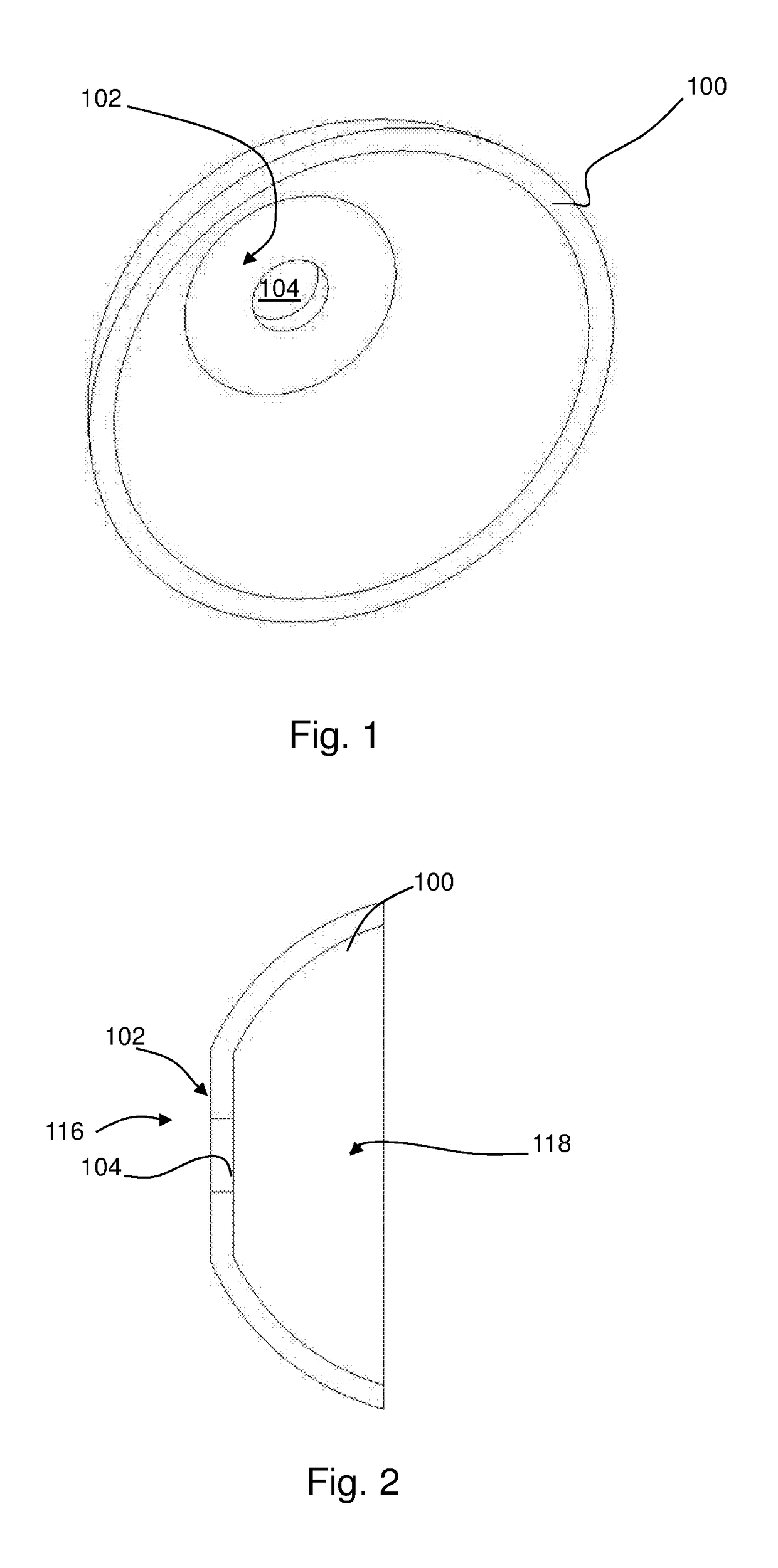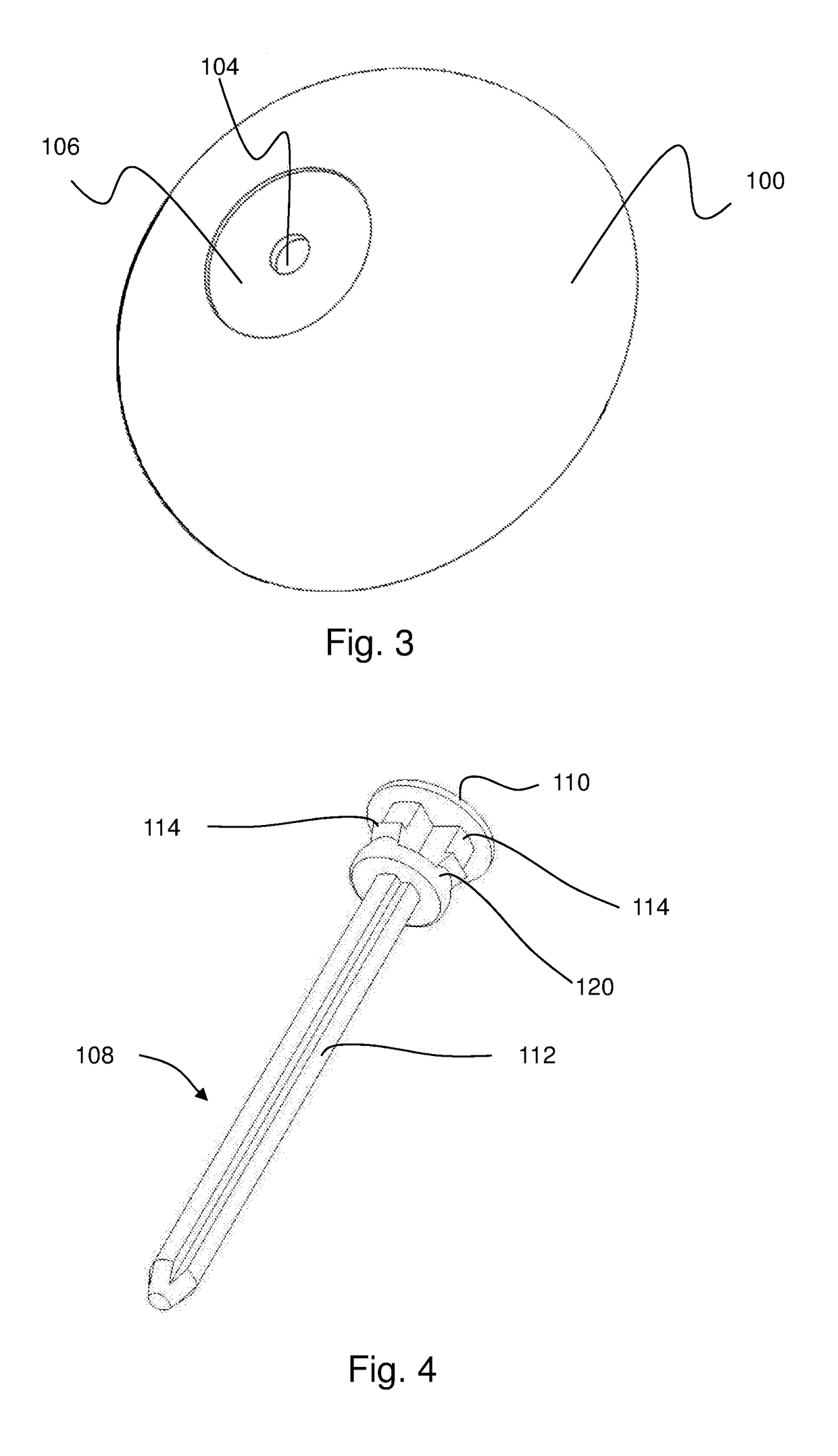Artificial eyes and manufacture thereof
a technology of artificial eyes and manufacturing, applied in the field of artificial eyes, can solve the problems of time-consuming and labor-intensive techniques, time-consuming and expensive processes, and inability to use inherent artistic ability, and achieve the effects of facilitating snapping or cutting off, improving the location of the pin (and therefore the substrate), and facilitating the removal of the end
- Summary
- Abstract
- Description
- Claims
- Application Information
AI Technical Summary
Benefits of technology
Problems solved by technology
Method used
Image
Examples
first embodiment
[0107]A second encapsulation method and apparatus according to the present invention is illustrated with reference to FIGS. 20 to 28. In this embodiment similar components are labelled by like numerals, but with the prefix “3”. Only differences from the first embodiment are discussed in detail.
[0108]A first step S228′ of the method as illustrated by a flowchart of FIG. 30 comprises providing a substrate 300. The substrate 300 can be formed via known methods, or alternatively, as discussed below the substrate may be formed using a method of 3D printing or dye sublimation.
[0109]A substrate 300 is shown in FIGS. 20 and 21 and is of the type described below formed using a 3D printing method. In this embodiment the substrate has a convex shape, specifically a hollow domed shape. Offset to one side of the apex of the dome (i.e. off-centre) is a flattened region 302 upon which the iris (not shown) of the artificial eye is provided. A depression 304 is formed in the centre of the flattened ...
second embodiment
[0129]In a further variant shown in FIG. 29, a hole 404 is provided in the substrate 400 in the centre of the iris and the support 408 has a protrusion 410 shaped to protrude therethrough. At least this portion of the support is coloured black, either by utilising a “two shot” injection moulding process in its manufacture, in which the black portion is moulded on top of the rest of the support in a second injection moulding step, or the entire support is coloured black with suitable pigment, thereby removing the need for a separate disc to represent the pupil. In other respects this variant and its manufacturing method is the same as the second embodiment, however.
[0130]The above described method of manufacture produces an artificial eye that is fully encapsulated in a mould material using a single step moulding process. This is advantageous over manufacturing processes of the prior art that generally require at least a two step moulding process to fully encapsulate the substrate 10...
PUM
| Property | Measurement | Unit |
|---|---|---|
| thick | aaaaa | aaaaa |
| thick | aaaaa | aaaaa |
| thickness | aaaaa | aaaaa |
Abstract
Description
Claims
Application Information
 Login to View More
Login to View More - R&D
- Intellectual Property
- Life Sciences
- Materials
- Tech Scout
- Unparalleled Data Quality
- Higher Quality Content
- 60% Fewer Hallucinations
Browse by: Latest US Patents, China's latest patents, Technical Efficacy Thesaurus, Application Domain, Technology Topic, Popular Technical Reports.
© 2025 PatSnap. All rights reserved.Legal|Privacy policy|Modern Slavery Act Transparency Statement|Sitemap|About US| Contact US: help@patsnap.com



